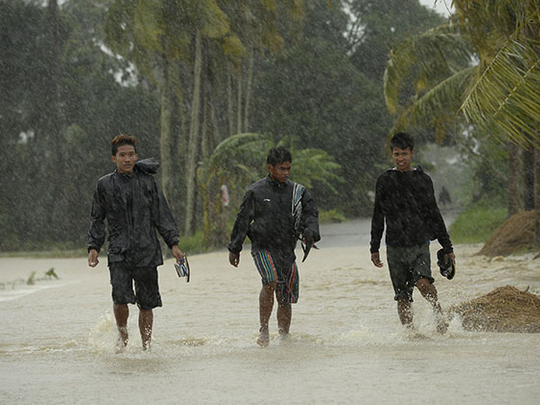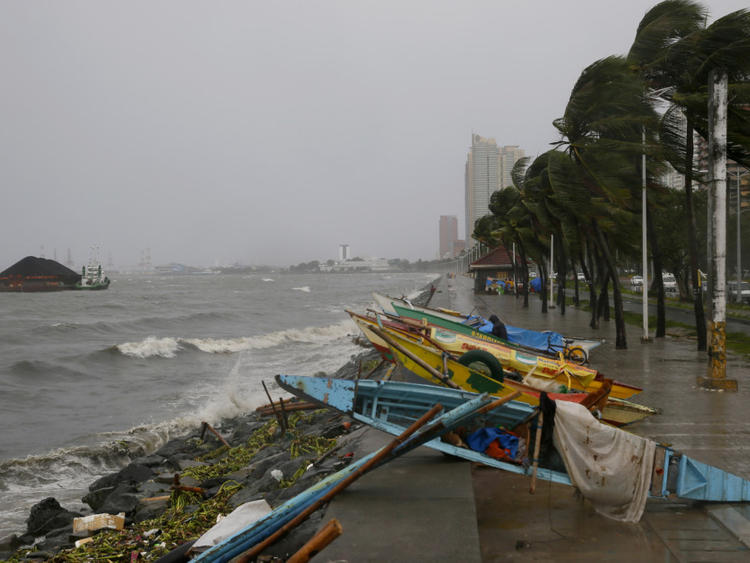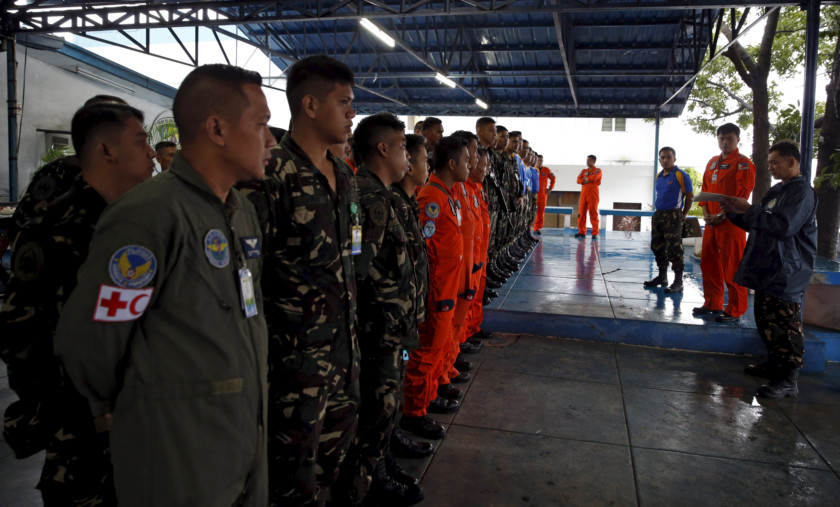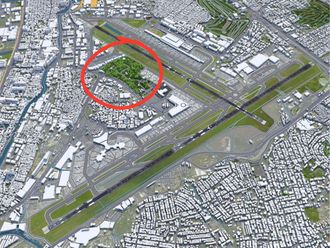
Manila: Slow-moving Typhoon Koppu weakened after blowing ashore with fierce winds in the northeastern Philippines on Sunday, leaving at least one person dead and six others missing, while displacing 16,000 villagers, officials said.
Army troops and police were deployed to rescue residents trapped in flooded villages in the hard-hit provinces of Aurora, where the typhoon blew ashore early on Sunday, and Nueva Ecija, a nearby rice-growing province where floodwaters swamped farmlands at harvest time, officials said.
After slamming into Aurora's Casiguran town after midnight Saturday, the typhoon weakened and slowed considerably, hemmed in by the Sierra Madre mountain range and a high pressure area in the country's north and another typhoon far out in the Pacific in the east, government forecaster Gladys Saludes said.
Howling winds knocked down trees and electric posts, leaving nine entire provinces without power while floods and small landslides made 25 roads and bridges impassable. Authorities suspended dozens of flights and sea voyages due to the stormy weather, and many cities canceled classes on Monday.
By Sunday afternoon, the typhoon had veered toward the north from its westward course and was tracked over mountainous Nueva Vizcaya province, according to the government's weather agency.
Satellite images show that the typhoon appeared to be losing its eye, a sign of its dissipating strength, acting weather bureau chief Esperanza Cayanan told reporters, adding that Koppu was forecast to move at a slow pace across the north before exiting the main northern island of Luzon on Wednesday.
While weather had begun to improve in some towns, and villagers had started to clear roads of fallen trees and debris, Koppu was still packing a ferocity that could set off landslides and flash floods, officials said.
"There's still danger," Cayanan said. "We shouldn't be complacent."
A teenager was pinned to death on Sunday by a fallen tree, which also injured four people and damaged three houses in suburban Quezon city in the Manila metropolis.
A man was electrocuted in northern Tarlac province and two bodies were seen being swept by floodwaters in Nueva Ecija, but authorities were trying to determine whether those were typhoon-related deaths.
Three fishermen were reported missing in northern Bataan province, along with three other men in Aurora's Baler town, according to the Office of Civil Defense.
President Benigno Aquino III and disaster-response agencies have warned that Koppu's rain and winds may potentially bring more damage with its slow speed. But Saludes, the government forecaster, said there was less heavy rain than expected initially in some areas, including in Manila, but fierce winds lashed many regions.
A wayward barge carrying coal and 10 crew drifted dangerously close to a breakwater and marina in Manila Bay. A tugboat positioned to prevent the barge from drifting away.
Forecasters said the typhoon could dump rain over much of Luzon.
State weather forecaster Alczar Aurelio said Koppu was expected to weaken further into a severe tropical storm by Tuesday, but would only leave Luzon, home to half the Asian archipelago’s 100 million people, by Wednesday.
The authorities reported widespread power and communications disruptions across Luzon, with many roads and bridges also blocked by landslides, floods or fallen trees and power pylons.
Ferry services across Luzon were suspended amid rough seas while commercial aviation was also disrupted with 30 flights cancelled, two of them on international routes.
Koppu, Japanese for "cup," is the 12th storm to hit the Philippines this year. The Philippines is hit by an average of 20 storms each year, many of them deadly.
The deadliest and strongest on record, Super Typhoon Haiyan, destroyed entire towns in the central islands in November 2013, leaving more than 7,350 people dead or missing.














